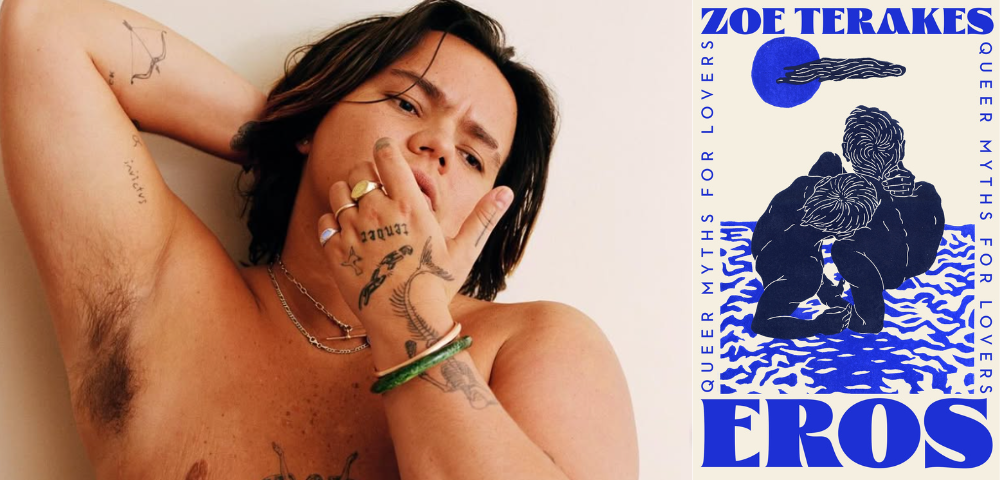
Baz Luhrmann’s Upcoming ‘Joan of Arc’ Film Is Based on a Surprisingly Queer Book

Superstar Australian director Baz Luhrmann has announced his next project will be a biopic of 15th century military hero Joan of Arc. The movie, Jehanne d’Arc, will be produced by Warner Bros as the follow up to Luhrmann’s 2022 smash hit Elvis.
A teenage General and the patron Saint of France may seem like an offbeat subject for Baz “Strictly Ballroom” Luhrmann. But Variety has reported the project is based on the novel Blood Red, Sister Rose by Australian author Thomas Kennealy, aka the man who wrote Schindler’s List.
Star Observer read it so you don’t have to. The good news? It’s super queer!
Joan of Arc has long been a feminist and sapphic icon. In a male dominated era of history, Joan put on pants and a suit of armour and led the French army to victory when pretty much everyone had given up hope. She was burned at the stake as a witch for her efforts, but history has redeemed her as a prodigy.
Blood Red, Sister Rose portrays Joan, who it styles Jehanne, as resigned to her own oddity. As a young girl she lusts after beautiful aristocratic ladies, confessing her love to one. In her “redneck” hometown, pubescent teenage girls experiment with each other in the fields before consigning themselves to marriage and the kitchen.
Jehanne is depicted as plain spoken, capable, self-contained in her feelings of femininity and outwardly tough. Her treatment of the patriarchs around her is withering.
The men Jehanne meets as she progresses from local weirdo to national hero are not left out. The heir to the throne of France, Charles, has two affairs with gentlemen of his bedchamber. One of Jehanne’s knight companions Jean de Metz slides into third base with his squire after getting hot and bothered in a pub. Infamous historic villain Gilles de Rais, and his love of pretty young men features prominently.
A decade after Joan died, the history books tell us Gilles de Rais became the Jeffrey Dahmer of 15th century Europe. He was accused of murdering more than 140 young men. Blood Red, Sister Rose makes it clear he is a monster in training.
A significant aspect of the novel is Jehanne’s decision to adopt men’s dress. It starts as a way to keep her safe travelling through a war zone, but a knight Bertrand warns her “Once you start dressing like that, nothing is ever the same.” We later find he is more comfortable dressing in women’s clothes, likes to flirt with fellow knights and is protected by his friends. It’s an impressive character for a book published in 1974.
Jehanne also finds herself enjoying men’s attire, especially as the King takes up her cause and kit’s her out in fine clothes and armour. It would be a big claim to say Blood Red, Sister Rose has trans characters, but with a main character described throughout affectionately as “she-knight” and “he-nun”, it strikes some powerful queer chords.
The million-dollar question when it comes to any portrayal of Joan is: how does the story handle religion? Joan was canonised by the Catholic Church in 1920. Depictions of her depend on which camp of historians you find yourself in.
On one hand she is seen as an arrogant, lucky young woman who was almost certainly insane. On the other, she is considered divinely inspired by true visions of the Archangel Michael, Saints Catherine and Margaret, and her virgin purity is the reason France exists today.
Blood Red, Sister Rose doesn’t shy away from Jehanne’s “voices”, but it’s clear she has no idea where they come from. When members of the clergy tell her they don’t think she’s a witch or demonically possessed, she is always relieved, if impatient. Jehanne is certain of two things. One: she’s going to be betrayed and sacrificed by the corrupt old boys club around her. Two: the “voices” are insistent, so she may as well save herself the stress and get on with doing what they tell her.
It’s a refreshing middle ground.
Luhrmann told Variety he has been waiting 30 years for the right time to make Jehanne d’Arc.
“She’s a young girl who’s from a small town who manages to tell this 25-year-old king, ‘We’re going to be able to unite the country, and you’ll be king.’ It’s that inspiration, that uplift. It’s like now where the current generation needs to do what the generation before us did, and that is make space, lift up the new voices and the new energy, and make sure that they’re there to smash through this ossified world,” he said.
Four-time Oscar winning designer and lifelong Luhrmann collaborator Catherine Martin is already reportedly touring France for inspiration. Meanwhile a casting call for Jehanne went out in November.
It remains to be seen whether the movie will echo the queer friendly characters of its source novel. Fingers crossed.










It’s a disappointment that the film will be based on a novel, but it’s not a documentary. It will be fiction anyway. And at least it uses her correct name, Jehanne, rather than the horrible anglicisation “Joan of Arc”.
Kenneally’s is a pretty good book & one of very few, fiction or fact, that mentions Gilles de Rais even glancingly. Joanites don’t like him, & like to pretend that Jehanne barely knew of his existence. In fact, he was her official protector & saved her life at least twice. He almost certainly planned to rescue her from Rouen.
He was also unofficially rehabilitated in 1992 & most thinking people who are acquainted with his story see him as as a French hero stitched up by a poisonous coalition of the Inquisition & his political enemies.
That was not how Keneally (writing in the 1970s) saw him, & it won’t be how Luhrmann presents him. Prepare yourself for yet another rawhead-&-bloody-bones extravaganza where “Bluebeard” eats live kittens for breakfast & the popcorn-munching audience assumes every word is true.
Of all the many dozens of reviews of “Blood Red, Sister Rose” that I’ve read, this is the first which claims it has a lesbian subplot. In any event, the novel is almost entirely fictitious and portrays Joan of Arc as the opposite of the real person on virtually all points. We have numerous vivid eyewitness accounts by people who knew her, as well as letters dictated to scribes by Joan of Arc herself (one of which was famously recently featured in a British Library exhibit on medieval women), and all of these show her to have been a devout Catholic who emphasized her virginity and especially opposed all forms of sexual sin. Even her enemies never accused her of having lesbian tendencies, nor most of the other traits that the novel invents; nor was Charles VII ever accused of gay affairs, nor was Jehan de Metz. Eyewitnesses at her trial said that the reason she continued wearing the so-called “male clothing” – which in reality was just a soldier’s horseback-riding outfit – was because it allowed her to keep all the parts “securely laced and tied” together to hinder her English guards from pulling her clothing off; and in the end the guards manipulated her into a “relapse” to justify a conviction by taking away her dress and forcing her to put the soldier’s outfit back on, according to the bailiff, Jehan Massieu. The book was deliberately written to turn history upside down. Hopefully the movie won’t do the same.